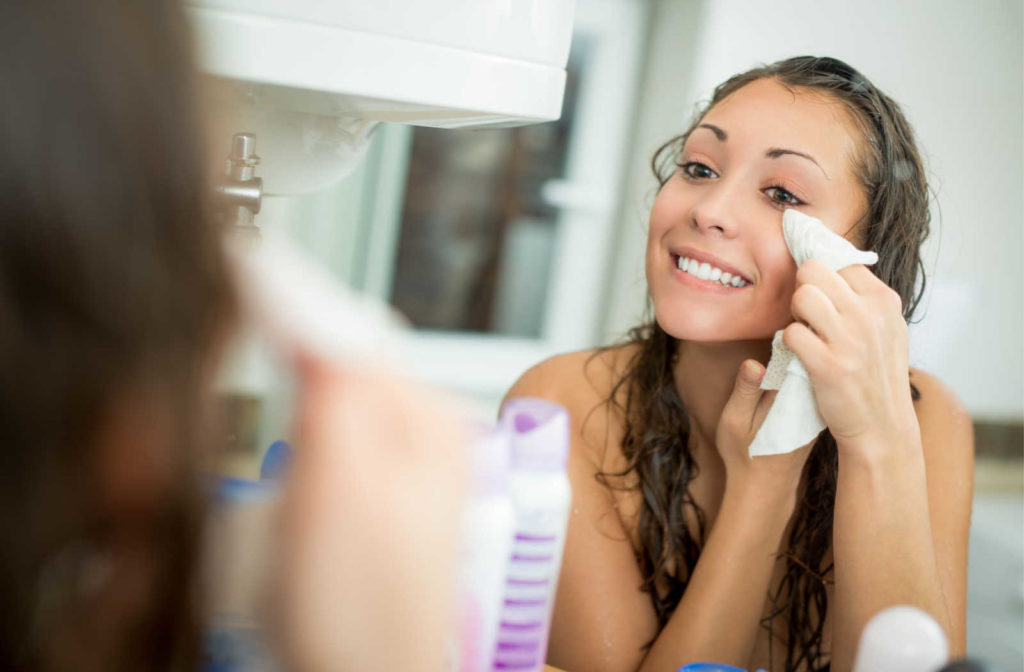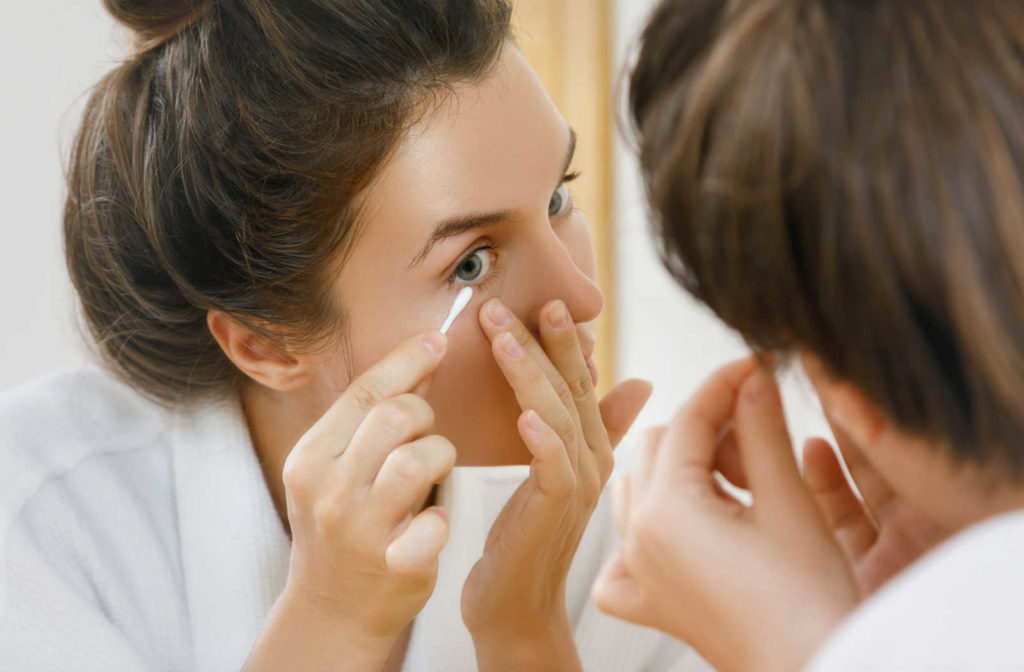Eyelid Health & Evaporative Dry Eye
Dry eye is more than an uncomfortable sensation. Chronic dry eye is a disease that can get in the way of everyday tasks, from clear vision to wearing contact lenses. Untreated, dry eye can also impact vision and eye health. While multiple treatments and medications are available for dry eye relief, eyelid hygiene is one of the most recommended care tips.
Most dry eye problems are related to inefficient oil gland production, known as evaporative dry eye (EDE). Oil glands are located in the eyelids and are essential for preventing evaporation. Therefore, when inflammation, bacteria, or eyelid problems result in poor gland function, it can lead to severe dry eye symptoms.
Common Eyelid Conditions
Eyelid hygiene can prevent or improve eyelid conditions that aggravate dry eye, including blepharitis, meibomian gland dysfunction, chalazion, and styes.
Dry eye, blepharitis, and meibomian gland dysfunction (MGD) can occur together, as blepharitis and MGD can lead to clogged oil glands (meibomian glands). When the meibomian glands cannot adequately produce oil (meibum), tears evaporate too quickly to nourish the eye.
Blepharitis
Blepharitis is an inflammation of the eyelids, often caused by bacteria or skin conditions, such as dandruff or rosacea. The 2 main types describe the affected eyelid area. Anterior blepharitis occurs where the eyelashes attach at the outer, front edge of the eyelid. Posterior blepharitis occurs at the eyelid area closed to the eyeball, affecting the inner edge.
Common symptoms include:
- Burning or gritty eyes
- Cornea inflammation
- Dry eyes (or teary eyes)
- Eyelid swelling or irritation
- Missing or misdirected eyelashes
Meibomian Gland Dysfunction
Meibomian gland dysfunction (MGD) occurs when the meibomian glands are inflamed or clogged. Therefore, the glands cannot effectively produce meibum, a lipid-rich oily substance.
Meibum prevents tear evaporation and helps maintain a smooth eye surface, necessary for clear vision. People have about 70—80 meibomian glands, with 30–40 in the upper eyelid and 20–30 in the lower eyelid.
Multiple risk factors can lead to meibomian gland dysfunction, including blepharitis, rosacea, or styes (hordeolum).
Symptoms of MGD can include:
- Blurry vision
- Burning or itchy eyes
- Dry or watery eyes
- Eye fatigue
- Feeling something in the eye(s)
- Red eyes
Chalazion & Styes
A stye (hordeolum) is the bacterial infection of an oil gland or eyelash follicle. The painful, pus-filled lump develops on the edge of or inside the eyelid. A separate but similar condition is a chalazion—a swollen lump that forms when an oil gland is blocked. A chalazion usually is not caused by an infection; however, a stye can result in chalazion formation if untreated.
Both conditions can share similar symptoms, including:
- Eyelid swelling
- Excessive tearing
- Tenderness or irritation
Eyelid hygiene can help prevent the excess bacteria that can cause blepharitis, a risk factor for styes and chalazion. It’s also crucial to keep the area clean while treating a stye or chalazion to improve healing. Patients should never attempt to “pop” a stye or chalazion like a pimple. Instead, the pus should be allowed to drain naturally, or lanced by your eye doctor.

Improving Eyelid Hygiene
Practicing consistent eyelid hygiene can help prevent or improve symptoms related to eyelid conditions. Fortunately, there are multiple forms of eyelid therapy, from cleansers to in-office treatments.
Your optometrist may recommend an over-the-counter option or prescribe an eyelid scrub to use at home. Gently massaging your eyelids with an eyelid scrub can remove harmful bacteria and help release meibum clogged in the meibomian glands.
Another home care option is a warm compress. The soothing heat can relax the eye, add moisture, and open the meibomian glands to improve oil flow. Use a clean cloth with comfortably warm water. Place the compress on closed eyes and let it sit for 5–10 minutes. Follow your optometrist’s recommendation if they provide alternative instructions.
Your optometrist may also recommend an in-office treatment to reduce excess bacteria and help improve meibomian gland function.
At Signature Eye Care, we offer TempSure Envi, a radiofrequency treatment that gently warms the skin. The warmth opens clogged meibomian glands to release the trapped oils, restoring balance to your tear film. The TempSure Envi treatment also promotes collagen, rejuvenating the eye area to reduce the look of fine lines and wrinkles.
Another in-office dry eye treatment is MiBoFlo. The medical system applies warmth to the eye’s surface, liquefying and dissolving oil clogged in the meibomian glands. The treatment improves oil flow to improve tear quality and reduce dry eye symptoms.
In addition to eyelid scrubs, some patients may benefit from prescription eyelid sprays. Multiple brands offer a hypochlorous lid spray, an agent naturally produced by white blood cells. Using the spray as a daily eyelid treatment can reduce bacteria and inflammation to open clogged oil glands.
More Eyelid Hygiene Tips
Keeping your eyes clean is a simple but effective way to reduce the risk of infection and dry eye symptoms. Your optometrist can recommend or prescribe eyelid hygiene treatments personalized for your unique eye care needs. Talk to your optometrist at Signature Eye Care about protecting your eyelid health. Book an appointment today!



